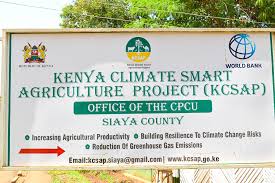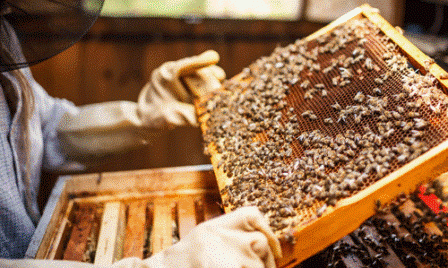You are here: KEFRI Knowledge Base>Main Web>KCSAPApicultureProject (31 Aug 2020, AdminUser)Edit Attach
KCSAPApicultureProject
Background
Honeybees play a crucial role in the conservation of the environment, as they pollinate a myriad of wild plants species and a large number of crops (Potts et al., 2010). In the recent past, declines of managed honeybees and other pollinators in the US and Europe have been reported (vanEngelsdorp and Meixner 2011), raising concerns on pollinator health in other parts of the world. Climate change has potential multiple effects on honeybees including increased transfer of pathogens to honeybee populations; reduction or increase in the areas available to honeybees, where drought-prone areas are abandoned and bees migrate to more favourable regions; increasing movements of bees of different species and races, bringing them into contact with pathogens with which they have never co-evolved as has happened with Varroa destructor and Apis mellifera; influences flower development and nectar and pollen production (Stevenson et al., 2015), diurnal activity patters (Rader et al., 2013) which are directly linked with colonies’ foraging activity and affects species richness and abundance (Papanikolaou. 2016), leading to species losses ((Burkle et al., 2013). Most of the pathogens, pests and parasites affecting global honeybee health are present throughout Africa (Muli et al., 2014; Mumoki et al., 2014). Similarly, a decline in hive colonization rates, reduced sizes of migratory swarms and a decrease in honey production have also been reported (National Beekeeping Station, 2007). The impact of climate change is expected to heighten the vulnerability of livestock systems, with recurrent droughts and unpredictable rainfall increasingly affecting livestock and food security (Mugo et al, 2015) undermining household incomes and livelihoods of thousands especially in the ASALs of Kenya. There is need for livelihood diversification to empower households by giving them a range of livelihood options to make them more food and income secure. Beekeeping provides nutritional, economic and ecological security (Masuku 2013; Raina et al., 2011; Munthali 1992). Selling hive products effectively strengthens peoples’ livelihoods (Leen et al., 2005), making them less vulnerable and resilient in case of shocks such as illness and poor farming seasons. The estimated potential for honey production is 100,000 and 10,000 tons of beeswax annually (Government of Kenya, 2008; Director Livestock Production, 2014). Beekeeping has been identified as a livelihood diversification option in Kajiado, Siaya and Tana River counties. The Government of Kenya (GoK) in its strategy for development of apiculture and emerging livestock, has identified honey production and development of apiculture as one of the few means by which people in ASALs can earn income and make them better adapt to climate change without damaging the environment they depend on to survive. In addition, the project addresses other development priorities: i). contributes to the realization of the Agricultural Sector Development Strategy of the Kenyan government ii). Addresses the objectives of the MoALF&I’s Food and Nutrition Strategy, including ‘diversification in production of and access to nutrient-rich foods’ and ‘equity in access to and control of resources (GoK, 2009) iii). Emphasizes the development of the ASALs as prioritized in the Kenyan government’s Vision 2030 and iv). Contributes to fulfilling KALRO’s Strategic Vision of utilizing science, technology and innovation to improve food security and sustainable natural resource management (KALRO, 2016) v). Contributes to the Kenya Climate Smart Agriculture Strategy 2017-2018 by sustainably increasing agricultural production and building resilience to climate change vi). Directly contributes to the 3 anchors of the Agricultural Sector Transformation and Growth Strategy (ASTGS) viz increase small-scale farmer incomes; increase agricultural output and value addition and boost household food resilience and vii). Addresses beekeeping and pollination issues hence delivers on Food and Nutrition Security under the Big 4 Agenda.Goals and Objectives
Goal: To increase the quality and quantity of fruits and hive products in selected counties for increased climate resilience, incomes, food and nutrition security. Specific Objectives are to:- Validate use of managed honeybees to increase mango and watermelon production through enhanced pollination services.
- Validate climate smart innovations for production of homey and hive product diversification (pollen propolis, beeswax) \
- Validate mobile application in management of honey bee pests and diseases
- Validate management practices that improve hive product quantity and quality
- Enhance value addition and marketing of hive products.
- Coordinate the collaborative research project effectively so as to achieve the set out goal and objectives
Expected Outputs
The project addresses key bottlenecks along the honey value chain in the 3 counties through validation production technologies to enhance hive occupancy, pollination services, management of pests and diseases, product diversification and marketing. Expected outputs: crop pollination through use of managed pollinators adopted; climate smart production technologies and systems adopted; honeybee colony productivity improved; honeybee pest and disease reporting and management enhanced; floral calendars developed; diverse and quality hive products produced and marketed. Expected Outcomes: increased use of bees as pollination agents for improved mango and watermelon production; increased colony productivity; reduced incidence of bee pests and diseases; availability of diverse and quality hive products; higher incomes from beekeeping hence improved livelihoods.Collaboration and Partnership
SEKU (validation of pollination services, validation of 2-queen production system, validation of hive design innovations and trapping of pests and overall coordination of project activities); Egerton University (product diversification and processing systems, value addition, certification of hive products); Kenya Forest Research Institute (KEFRI) (validation of pollination services, validation of hive designs innovations, and honey value chain analysis. Partners are The Hive Ltd (marketing and apiculture value chain analysis), Directorate of Veterinary Services (DVS (validation of mobile app for pest reporting and hive products contamination risks and mitigation pathways) and Baraka Agricultural College (best apicultural management practices).| Participating Institution | Contact Person | Roles |
|---|---|---|
| SEKU | Dr. Elliud Muli | Principal Investigator; pollination services; hive designs and pest trapping systems |
| KEFRI | Dr. Mercy Gichora | Pollination services; hive designs and apiculture value chain analysis |
| Egerton University | Stephen Kagio | Product diversification; value addition; processing systems and certification of products |
| Baraka Agricultural College | Virginia Nyamu | Best apicultural management practices |
| The Hive Ltd | Christopher Nzuki | Apiculture value chain analysis and marketing |
| Directorate of Veterinary Services | Samuel Kabochi | Mobile application for pests and product safety |
Beneficiaries
The primary beneficiaries of this project are poor and marginalized smallholder beekeepers in ASAL areas through improved incomes from sale of high quality and diverse hive products (honey, beeswax, propolis and bee colonies). Crop farmers will benefit from increased bee pollination services especially for fruits and vegetables contributing to nutritional security. Livestock farmers will benefit from increased livestock forage (including grasses) due to increased pollination of wild plants. Increased vegetation cover will potentially reduce soil erosion and increase carbon sinks. Policy makers will benefit from the project publications which will provide information to guide apiculture policy formulation. Honey traders will have access to increased honey both in volumes and quality, hence improved supply and access by consumers to hive products, contributing to better nutritional and health outcomes.
KCSAP Apiculture Project
31 Aug 2020 - 14:02
#patternMain {display:inline table} .foswikiFormSteps {display:none} .foswikiRight{display:none} .container {padding:0px;background color:transparent;} .float{flo...
31 Aug 2020 - 14:02
#patternMain {display:inline table} .foswikiFormSteps {display:none} .foswikiRight{display:none} .container {padding:0px;background color:transparent;} .float{flo...
Submitted by VictorKamau ON 31 Aug 2020
TopicInfoForm edit
| topictitle | KCSAP Apiculture Project |
| type | ProjectHomePage |
| thematicarea | FPI |
| researchprogramme | CHERP |
| project | KCSAP Apiculture Project |
| author | MercyGichora |
| summary | The project will be implemented in Kajiado, Siaya and Tana River Counties, to validate climate smart apicultural technologie (modified hive designs for enhanced temperature regulation), pollination of mango and watermelon by stingless bees and honeybees, mobile app for pest and disease reporting, production systems for propolis, pollen and bees wax, low-tech traps for wax moths, large hive beetles, small hive beetles and screened bottoms for varroa control and an analysis of the honey market v |
| I | Attachment | Action | Size | Date | Who | Comment |
|---|---|---|---|---|---|---|
| |
Apiculture-Bee-Keeping.gif | manage | 100 K | 31 Aug 2020 - 12:53 | AdminUser | |
| |
kcsap-siaya.jpg | manage | 13 K | 31 Aug 2020 - 13:00 | AdminUser |
Edit | Attach | Print version | History: r2 < r1 | Backlinks | View wiki text | Edit wiki text | More topic actions
Topic revision: r2 - 31 Aug 2020, AdminUser
 Copyright &© by the contributing authors. All material on KEFRI Knowledge Base is the property of Kenya Forestry Research Institute (KEFRI).
Copyright &© by the contributing authors. All material on KEFRI Knowledge Base is the property of Kenya Forestry Research Institute (KEFRI). Ideas, requests, problems regarding KEFRI Knowledge Base? Send feedback




